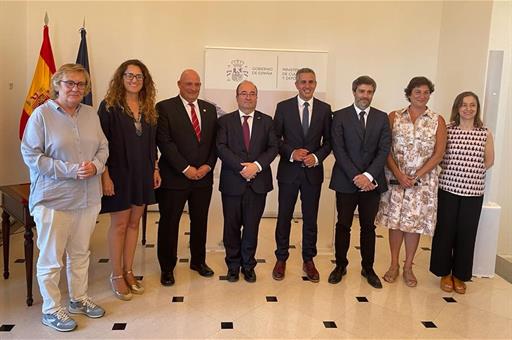Culture and Sport and the Government of Cantabria sign an agreement to set up the UNESCO International Centre for Cave Art
News - 2022.7.7
The Minister for Culture and Sport, Miquel Iceta, has signed an agreement with the Vice-President and Regional Minister for Universities, Equality, Culture and Sport of the Government of Cantabria, Pablo Zuloaga, to set up a Category 2 Centre for Rock Art in Santillana del Mar (Cantabria) under the auspices of the United Nations Educational, Scientific and Cultural Organisation (UNESCO).
The centre, which will be an international reference in the implementation of the World Heritage Convention, will be managed by the Regional Society for Education, Culture and Sport of the Government of Cantabria. As the main centre for research and dissemination of cave art, the National Museum and Research Centre of Altamira, a state-owned museum managed by the Ministry of Culture and Sport, will assume its scientific direction.
The General State Budget 2022 already includes an allocation of 50,000 euros to the Regional Society for Education, Culture and Sport for the running costs of the Centre.
The choice of Spain as the country to host the Centre was approved by a resolution of the UNESCO General Conference, adopted at its 35th session in Paris in autumn 2011. The reason was thematic, as it is the country with the most rock art on the World Heritage List. The signing of the agreement between the Ministry of Culture and Sport and the Government of Cantabria is the step prior to the subsequent signing of the agreement between the United Nations agency and the Government of Spain for the effective implementation of the International Centre for Cave Art and the World Heritage Convention, which must be processed in accordance with Law 25/2014, of 27 November, on Treaties and other International Agreements.
Category 2 Institutes and Centres
Category 2 Institutes and Centres serve as hubs that bring together regional and international expertise and provide technical assistance and services to Member States, partners and UNESCO. Through their activities, they also promote research, in addition to global, regional, sub-regional and inter-regional activities carried out by UNESCO and other organisations. There are currently 20 UNESCO Category 2 Institutes and Centres working in the cultural field.
Non official translation





